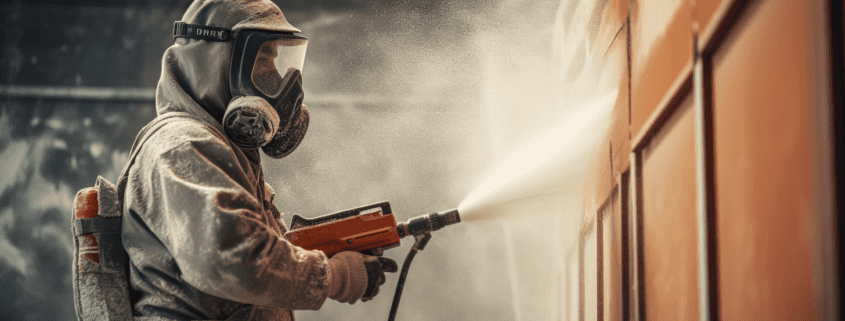Soda Blasting vs. Sandblasting: Which Method is Right for Your Project?
Welcome to the Soda Tec blog! As Australia’s leading soda blasting specialist, we understand that choosing the right surface cleaning and preparation method for your project is crucial. Soda blasting and sandblasting are two popular techniques, each with its unique advantages and applications. In this blog, we’ll delve into the differences between soda blasting and sandblasting to help you make an informed decision for your specific needs.
What is Soda Blasting?
Soda blasting is a non-destructive and environmentally friendly cleaning method that uses baking soda particles to remove paint, contaminants, and grime from various surfaces. The process involves propelling compressed air through a specialised blasting nozzle, which mixes the soda with air and directs it towards the surface to be cleaned. Upon impact, the soda particles remove unwanted coatings without causing damage to the underlying material.
What is Sandblasting?
Sandblasting, on the other hand, is a more traditional abrasive blasting technique that uses sand or other abrasive materials to clean and prepare surfaces. Similarly, compressed air is used to propel the abrasive particles against the target surface, effectively removing paint, rust, scale, and other coatings. While sandblasting is effective, it can be more aggressive and may lead to surface erosion or damage.
1. Surface Material Consideration
Soda Blasting: Soda blasting is gentle and suitable for a wide range of surfaces, including delicate materials like wood, fibreglass, and thin metals. It is commonly used in automotive restoration, historical preservation, and food industry equipment cleaning, where preserving the surface’s integrity is critical.
Sandblasting: Sandblasting is more aggressive and ideal for heavy-duty applications involving robust materials like concrete, steel, and thick metal surfaces. However, it may not be suitable for more delicate materials, as it can cause surface pitting or damage.
2. Environmental Impact
Soda Blasting: One of the significant advantages of soda blasting is its eco-friendliness. Baking soda is non-toxic and water-soluble, making cleanup easier and safer for the environment. Soda blasting produces minimal dust, making it a preferred option for projects where environmental impact is a concern.
Sandblasting: Sandblasting generates a significant amount of dust and debris, including hazardous materials like silica. This can be harmful to both the environment and the operators, requiring more extensive safety measures and proper waste disposal procedures.
3. Precision and Control
Soda Blasting: Soda blasting offers greater control and precision due to its gentle nature. It can remove coatings without affecting intricate details or causing surface distortions, making it suitable for projects that require meticulous cleaning.
Sandblasting: While effective, sandblasting may not provide the same level of precision as soda blasting. It can be challenging to control the blasting process, especially on more delicate surfaces, which could lead to unintentional damage.
4. Clean-Up and Residue
Soda Blasting: Soda blasting produces a water-soluble residue that can be easily washed away with water or a mild cleaning solution. This reduces post-cleaning efforts and leaves behind a surface ready for the next step in your project.
Sandblasting: Sandblasting generates a significant amount of abrasive waste that requires proper containment and disposal. The cleanup process can be more time-consuming and may involve additional expenses.
5. Cost Considerations
Soda Blasting: While soda blasting may have a slightly higher initial cost compared to sandblasting, the long-term savings can be significant due to reduced cleanup efforts, minimised surface damage, and less need for rework.
Sandblasting: Sandblasting might be more budget-friendly upfront, but it’s essential to consider potential costs associated with surface repairs and environmental cleanup.
Ultimately, the choice between soda blasting and sandblasting depends on your specific project requirements. If you need a gentle, environmentally friendly method that won’t compromise the integrity of delicate surfaces, soda blasting is likely the better option and has more benefits. However, for heavy-duty applications on robust materials, sandblasting might be the more suitable choice.
At Soda Tec, we offer expert soda blasting services across Australia. Our team of skilled professionals can help you determine the best method for your project, ensuring outstanding results and minimal environmental impact. Whether it’s automotive restoration, industrial equipment cleaning, or historical preservation, you can trust Soda Tec to deliver top-notch surface preparation solutions tailored to your needs.
If you have any questions or need assistance with your next project, feel free to reach out to us. Stay tuned to our blog for more insightful articles on soda blasting and its diverse applications!



